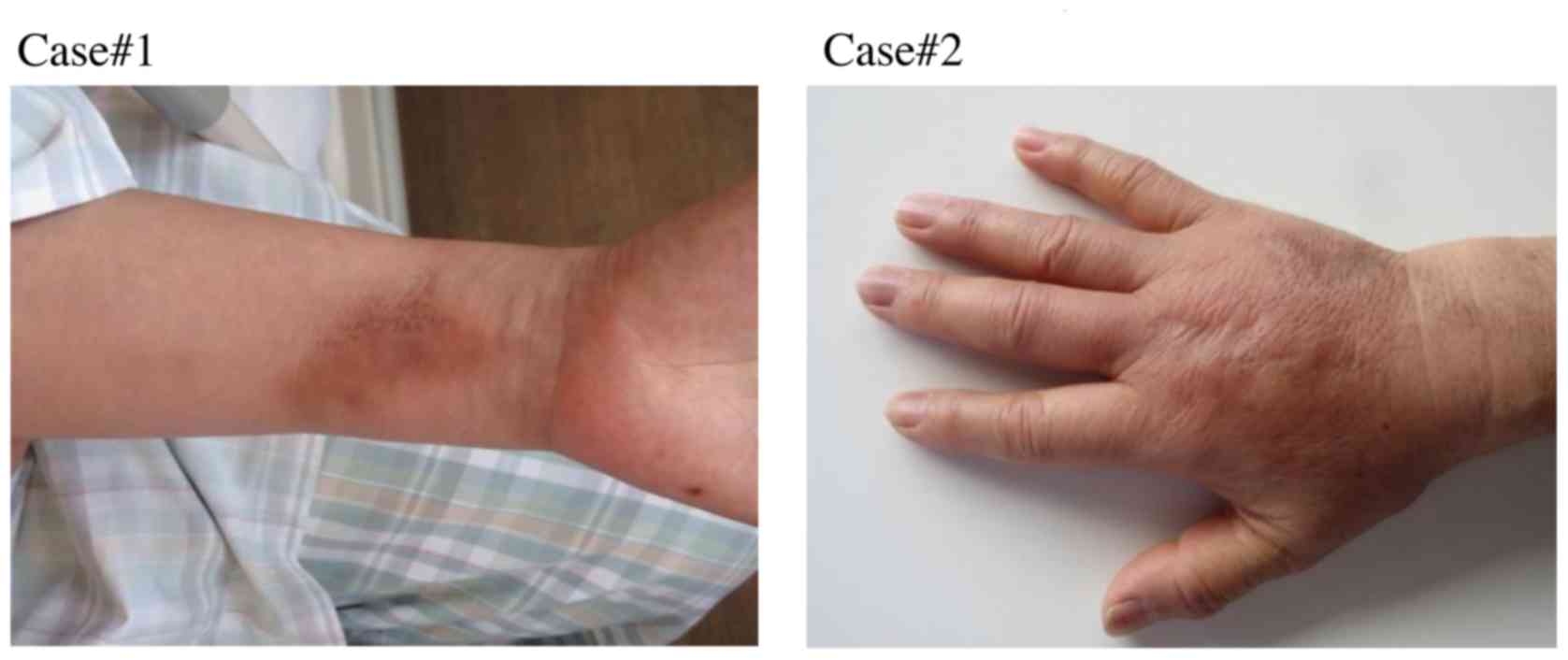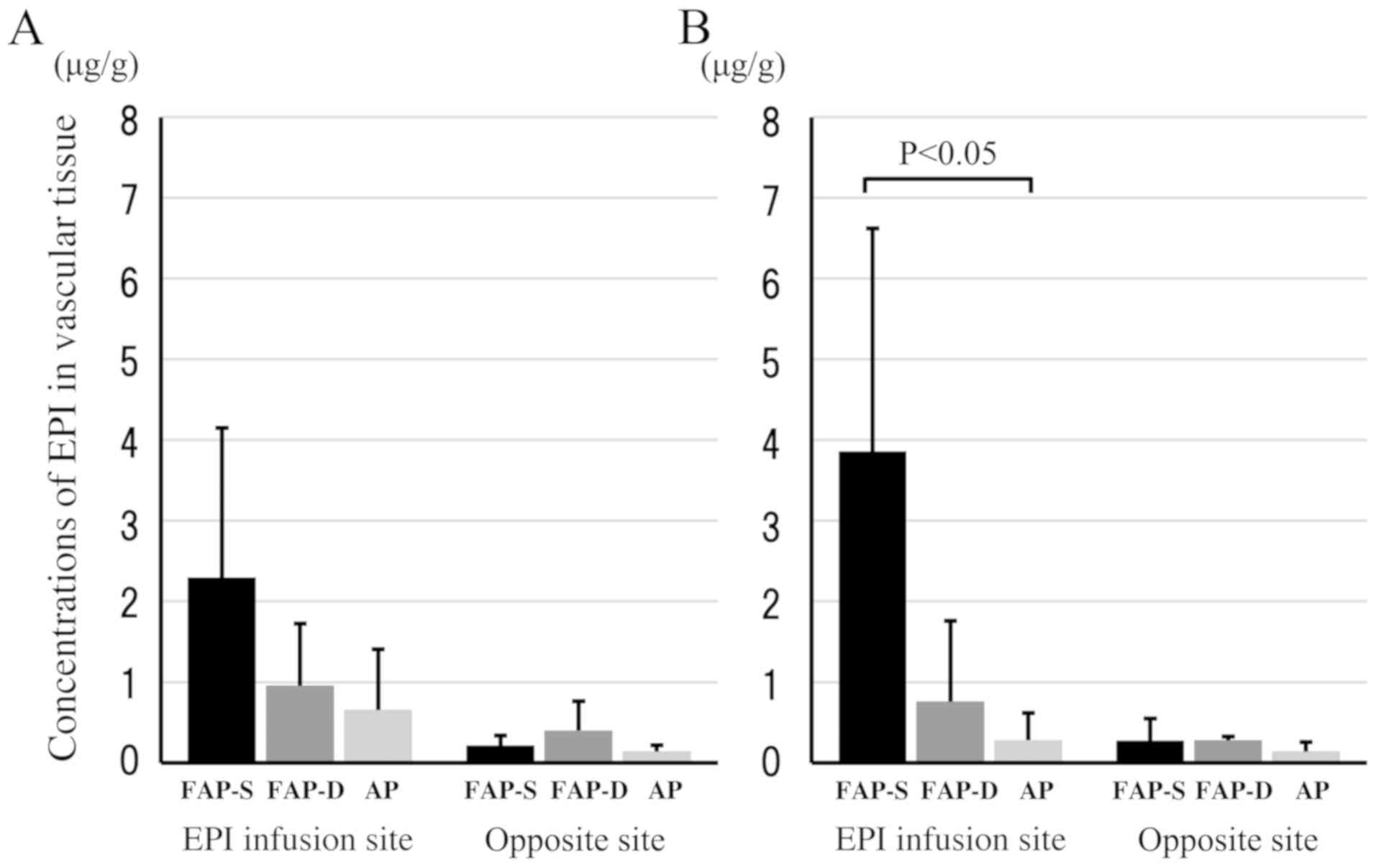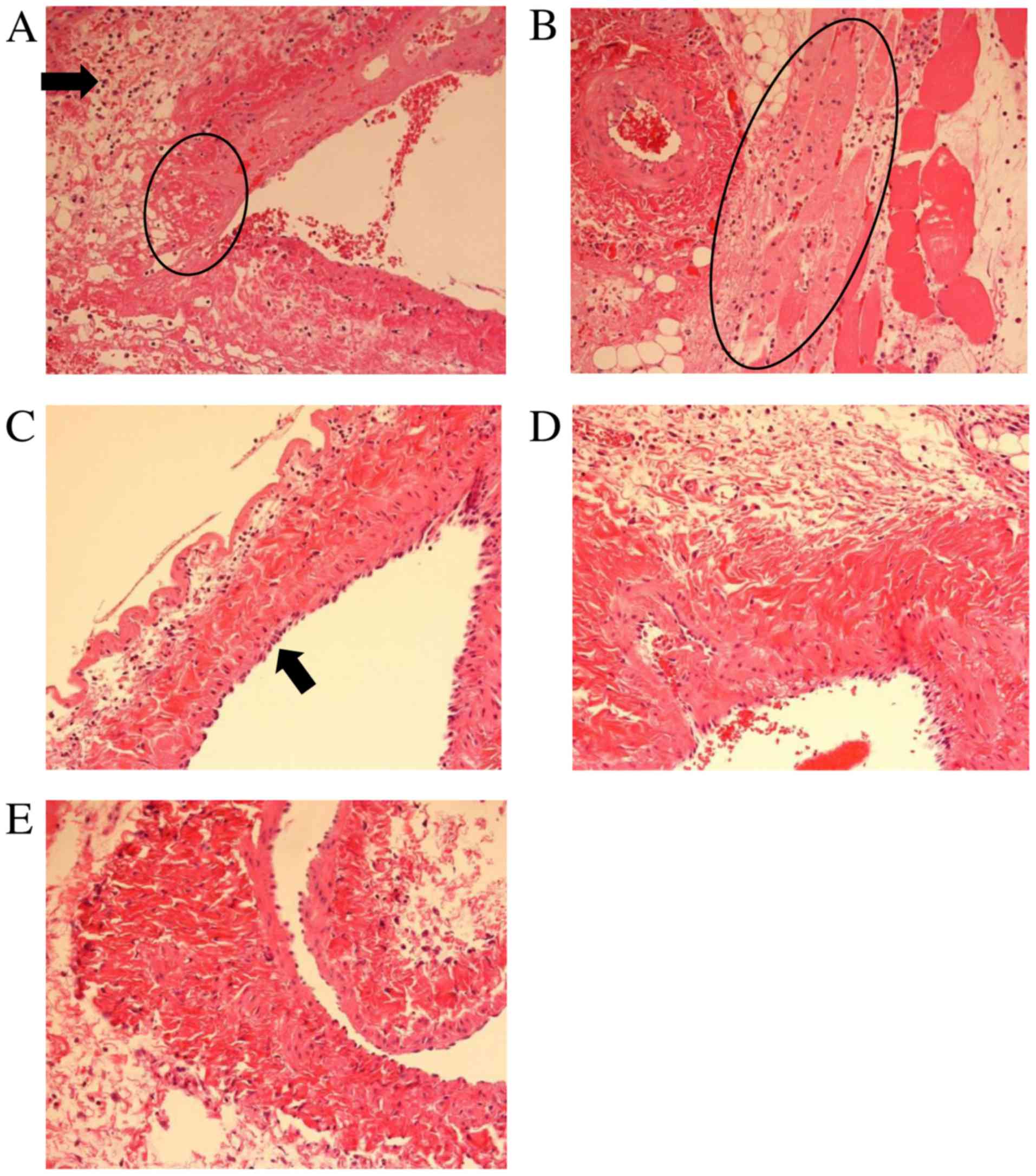|
1
|
Hesketh PJ, Kris MG, Basch E, Bohlke K,
Barbour SY, Clark-Snow RA, Danso MA, Dennis K, Dupuis L, Dusetzina
SB, et al: Antiemetics: American society of clinical oncology
clinical practice guideline update. J Clin Oncol. 35:3240–3261.
2017. View Article : Google Scholar : PubMed/NCBI
|
|
2
|
Rolia F, Molassiotis A, Herrstedt J, Aapro
M, Gralla RJ, Bruera E, Clark-Snow RA, Dupuis LL, Einhorn LH, Feyer
P, et al: 2016 MASCC and ESMO guideline update for the prevention
of chemotherapy- and radiotherapy-induced nausea and vomiting and
of nausea and vomiting in advanced cancer patients. Ann Oncol. 27
(Suppl 5):v119–v133. 2016. View Article : Google Scholar : PubMed/NCBI
|
|
3
|
Berger MJ, Ettinger DS, Aston J, Barbour
S, Bergsbaken J, Bierman PJ, Brandt D, Dolan DE, Ellis G, Kim EJ,
et al: NCCN guidelines insights: Antiemesis, version 2.2017. J Natl
Compr Canc Netw. 15:883–893. 2017. View Article : Google Scholar : PubMed/NCBI
|
|
4
|
Pritchett W and Kinsley K: Benefits and
risks of fosaprepitant in patients receiving emetogenic regimens.
Clin J Oncol Nurs. 20:555–556. 2016. View Article : Google Scholar : PubMed/NCBI
|
|
5
|
Chow AY, Chin C, Dahl G and Rosenthal DN:
Anthracyclines cause endothelial injury in pediatric cancer
patients: A pilot study. J Clin Oncol. 24:925–928. 2006. View Article : Google Scholar : PubMed/NCBI
|
|
6
|
Ben Aharon I, Bar Joseph H, Tzabari M,
Shenkman B, Farzam N, Levi M, Shalgi R, Stemmer SM and Savion N:
Doxorubicin-induced vascular toxicity-targeting potential pathways
may reduce procoagulant activity. PLoS One. 8:e751572013.
View Article : Google Scholar : PubMed/NCBI
|
|
7
|
Bar-Joseph H, Stemmer SM, Tsarfaty I,
Shalgi R and Ben-Aharon I: Chemotherapy-induced vascular
toxicity-real-time in vivo imaging of vessel impairment. J Vis Exp.
e516502015.PubMed/NCBI
|
|
8
|
Lundberg JD, Crawford BS, Phillips G,
Berger MJ and Wesolowski R: Incidence of infusion-site reactions
associated with peripheral intravenous administration of
fosaprepitant. Support Care Cancer. 22:1461–1466. 2014. View Article : Google Scholar : PubMed/NCBI
|
|
9
|
Chau E, Lundberg J, Phillips G, Berger M
and Wesolowski R: Updated report on incidence of infusion-site
reactions associated with peripheral intravenous administration of
fosaprepitant. J Oncol Pharm Pract. 10781552187693472018.PubMed/NCBI
|
|
10
|
Sato Y, Kondo M, Inagaki A, Komatsu H,
Okada C, Naruse K, Sahashi T, Kuroda J, Ogura H, Uegaki S, et al:
Highly frequent and enhanced injection site reaction induced by
peripheral venous injection of fosaprepitant in
anthracycline-treated patients. J Cancer. 5:390–397. 2014.
View Article : Google Scholar : PubMed/NCBI
|
|
11
|
Lead AD, Kadakia KC, Looker S, Hilger C,
Sorgatz K, Anderson K, Jacobson A, Grendahl D, Seisler D, Hobday T
and Loprinzi CL: Fosaprepitant-induced phlebitis: A focus on
patients receiving doxorubicin/cyclophosphamide therapy. Support
Care Cancer. 22:1313–1317. 2014. View Article : Google Scholar : PubMed/NCBI
|
|
12
|
Patel P, Leeder JS, Piquette-Miller M and
Dupuis LL: Aprepitant and fosaprepitant drug interactions: A
systematic review. Br J Clin Pharmacol. 83:2148–2162. 2017.
View Article : Google Scholar : PubMed/NCBI
|
|
13
|
Mauri D, Pavlidis N and Ioannidis JPA:
Neoadjuvant versus adjuvant systemic treatment in breast cancer: A
meta-analysis. J Natl Cancer Inst. 97:188–194. 2005. View Article : Google Scholar : PubMed/NCBI
|
|
14
|
Tsuda T, Kyomori C, Mizukami T, Taniyama
T, Izawa N, Horie Y, Hirakawa M, Ogura T, Nakajima T, Tsugawa K and
Boku N: Infusion site adverse events in breast cancer patients
receiving highly emetic chemotherapy with prophylactic anti-emetic
treatment with aprepitant and fosaprepitant: A retrospective
comparison. Mol Clin Oncol. 4:603–606. 2016. View Article : Google Scholar : PubMed/NCBI
|
|
15
|
Fujii T, Nishimura N, Urayama KY, Kanai H,
Ishimaru H, Kawano J, Takahashi O, Yamauchi H and Yamauchi T:
Differential impact of fosaprepitant on infusion site adverse
events between cisplatin- and anthracycline-based chemotherapy
regimens. Anticancer Res. 35:379–383. 2015.PubMed/NCBI
|
|
16
|
Italia C, Paglia L, Trabattoni A, Luchini
S, Villas F, Beretta L, Marelli G and Natale N: Distribution of
4′Epi-doxorubicin in human tissues. Br J Cancer. 47:545–547. 1983.
View Article : Google Scholar : PubMed/NCBI
|
|
17
|
Camaggi CM, Strocchi E, Carisi P, Martoni
A, Melotti B and Pannuti F: Epirubicin metabolism and
pharmacokinetics after conventional- and high-dose intravenous
administration: A cross-over study. Cancer Chemother Pharmacol.
32:301–309. 1993. View Article : Google Scholar : PubMed/NCBI
|
|
18
|
Robert J: Clinical pharmacokinetics of
epirubicin. Clin Pharmacokinet. 26:428–438. 1994. View Article : Google Scholar : PubMed/NCBI
|
|
19
|
Chen R, Li J, Hu WW, Wang ML, Zou SL and
Miao LY: Circadian variability of pharmacokinetics of cisplatin in
patients with non-small-cell lung carcinoma: Analysis with the
NONMEM program. Cancer Chemother Pharmacol. 72:1111–1123. 2013.
View Article : Google Scholar : PubMed/NCBI
|
|
20
|
Murakami T and Yumoto R: Role of
phosphatidylserine binding in tissue distribution of
amine-containing basic compounds. Expert Opin Drug Metab Toxicol.
7:353–364. 2011. View Article : Google Scholar : PubMed/NCBI
|
|
21
|
Interview Form ‘PROEMEND for intravenous
infusion 150 mg’. March. 2016, http://www.pmda.go.jp/
|
|
22
|
Ottoboni T, Keller MR, Cravets M,
Clendeninn N and Quart B: Bioequivalence of HTX-019 (aprepitant IV)
and fosaprepitant in healthy subjects: A phase I, open-label,
randomized, two-way crossover evaluation. Drug Des Devel Ther.
12:429–435. 2018. View Article : Google Scholar : PubMed/NCBI
|
|
23
|
Ottoboni T, Lauw M, Keller MR, Cravets M,
Manhard K, Clendeninn N and Quart B: Safety of HTX-019 (intravenous
aprepitant) and fosaprepitant in healthy subjects. Future Oncol.
14:2849–2859. 2018. View Article : Google Scholar : PubMed/NCBI
|
|
24
|
Schwartzberg LS and Navari RM: Safety of
polysorbate 80 in the oncology setting. Adv Ther. 35:754–767. 2018.
View Article : Google Scholar : PubMed/NCBI
|

















